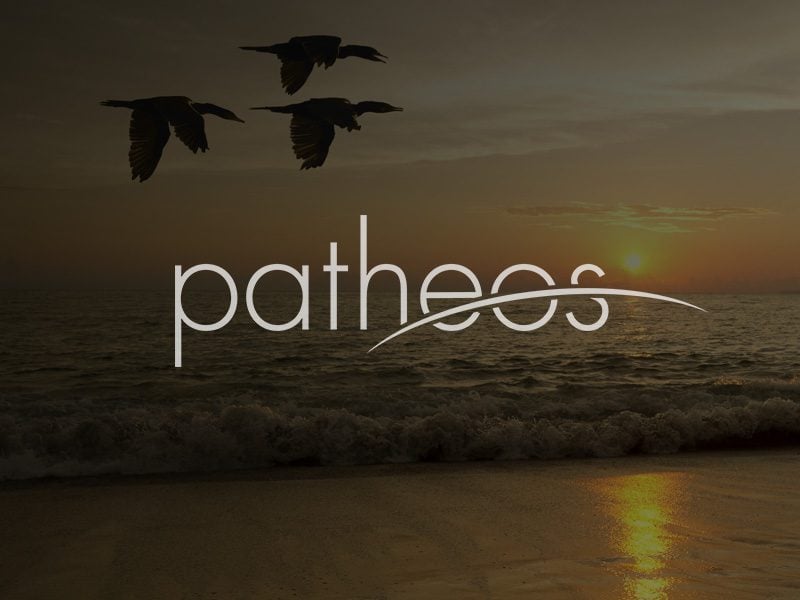More answers from Cardinal George on ‘Da Vinci Code’
Well, that struck a nerve. As the e-mails poured in from far and wide in response to last week’s column about Dan Brown’s novel The DaVinci Code (fact, fiction or both?), I started to wonder if I might hear from all of the readers of the 4.5 million copies in print.
I didn’t. But those who wrote me missives and hit the “send” button sure felt passionately about the novel and whether it was, in fact, just a novel.
From my unscientific survey, about half of you think it’s simply well-marketed fiction and nothing more.
The other half, the ones who are a little more open to conspiracy theories and embrace the possibility that there is a creature of mythic proportions living in Loch Ness, believe Brown might be on to something. And something big.
Still, for every theory and explanation about the Holy Grail and Mary Magdalene, goddess religion and patriarchal power plays that landed in the old electronic in-box, I got three more questions.
Many of the questions were directed to Cardinal Francis George, whom I quoted at length last week after having a conversation with him about our shared frustration with Brown’s book. In that conversation, the cardinal addressed many of the questions that readers had. I just didn’t have space to include all his answers.
So, please allow me to let Cardinal George finish his thoughts.
And once again, if you haven’t read Da Vinci and intend to, you probably should STOP READING THIS RIGHT NOW.
***
George on Constantine and whether the Council of Nicea “invented” the divinity of Jesus:
“They created a creed . . . in the face of the Arian heresy that denied Jesus was divine. They reasserted the divinity, but they reasserted it because people from the beginning believed it when faced with the resurrection.
“They did write the creed that we now say. [The Nicene Creed.] That’s quite true. But they wrote it because it was the faith of the church, not because they were negotiating.”
“Why did the Presbyterians write the Westminster Confession? Why did the Lutherans write the Augsburg Confession? Because they wanted to have a creedal statement in the light of the Reformation. It doesn’t mean they invented it. . . .
“All those martyrs the first 300 years, were they covering up the fact that Jesus was married to Mary Magdalene? Why in heaven’s name would someone go to their death to protect that secret? It’s absurd.”
Indeed, Your Eminence, but people die all the time for the stupidest of reasons.
“Yes, but [the martyrs] must have died believing he was divine. Sure. Why else would they? If, in fact, someone says, ‘Deny this or we’ll kill you,’ if it isn’t true, you might as well deny it. That would seem to be the logical thing. I hope I wouldn’t die to protect a lie.”
***
On the spiritual significance of the Holy Grail:
“The Holy Grail? That’s got no place whatsoever in Catholic doctrine. It doesn’t figure at all. It’s a matter of legend, from Arthurian times. The Holy Grail means nothing in Catholic teaching. It means nothing.”
***
On the Knights Templar — medieval Triple A or guardians of The Greatest Secret Not Known to Humankind?:
“The Knights Templar really existed. They were one of the military orders of knights who went, first of all to the Holy Land to take care of pilgrims who were ill, and then, when the Holy Land was conquered by Muslims, turned around and were a part of trying to take it back during the Crusades. But in that, they still continued to run hospitals.
“Now, they were suppressed by [King] Philip of France, and the pope went along with it. The reason they were suppressed is because they had grown to be the bankers, and he didn’t want to pay them back, and so he decided to wipe them out. And he did. They were wiped out. Oh yeah.
“But that business of excavating under the Jerusalem Temple? That’s all nonsense.”
***
On those “other” gospels:
“There is a Gospel of Mary, there is a Gospel of Thomas and a Gospel of Phillip. There are all kinds of second-century gospels. And, of course, you ask why weren’t they canonical?
“Well, from the viewpoint of faith, the church, knowing her Lord, through the sacraments and through the tradition that unites us to it, the oral tradition first and then the written tradition and the gospels that are recognized as canonical, discerns what is just, pious literature or what is positively wrong and what isn’t.
“Now, people will look at that in their own climate and say, aha, power! But it’s just simply a matter of faith. You can read those documents now — and I haven’t read all the gnostic gospels nor all the gnostic literature, but I have read some of them — and it’s quite clear why they’re not in the canon.
“The picture of Christ that is presented and the picture of his disciples does not correspond to our own faith. But that isn’t a persuasive argument. They’ll say, ‘Aha, of course you’d say that. You’re a part of it.’ ”
***
And on the bottom line:
“If Jesus is only what is presented in The Da Vinci Code, why should we even care? All he is is some kind of guru of 2,000 years ago.”
***
Among the many e-mail responses to last week’s column, two in particular stood out. One, from a reader named Paula, didn’t talk about the religious aspects or impact of Da Vinci. Instead, she pointed to a literary convention she rightly thought may have eluded me.
Many English and American novelists have used a kind of fictive declaration in their works of fiction, like Brown does right before the prologue in Da Vinci, to try to persuade the reader that their novel is historically true.
Daniel DeFoe, the 18th century British novelist, did it most memorably in Robinson Crusoe.
At the beginning of The Scarlet Letter, Nathaniel Hawthorne tells the reader that his story of Hester Prynne can be authenticated by a manuscript he discovered in a Massachusetts customs house.
“It’s only a novel,” Paula told me.
My favorite note, though, came from a reader named Lorraine, who summed up her theory about the provocative ideas Brown presents in Da Vinci this way:
“The true conspiracy is a savvy marketing one.”
Copyright © The Sun-Times Company
All rights reserved. This material may not be published, broadcast, rewritten, or redistributed.











